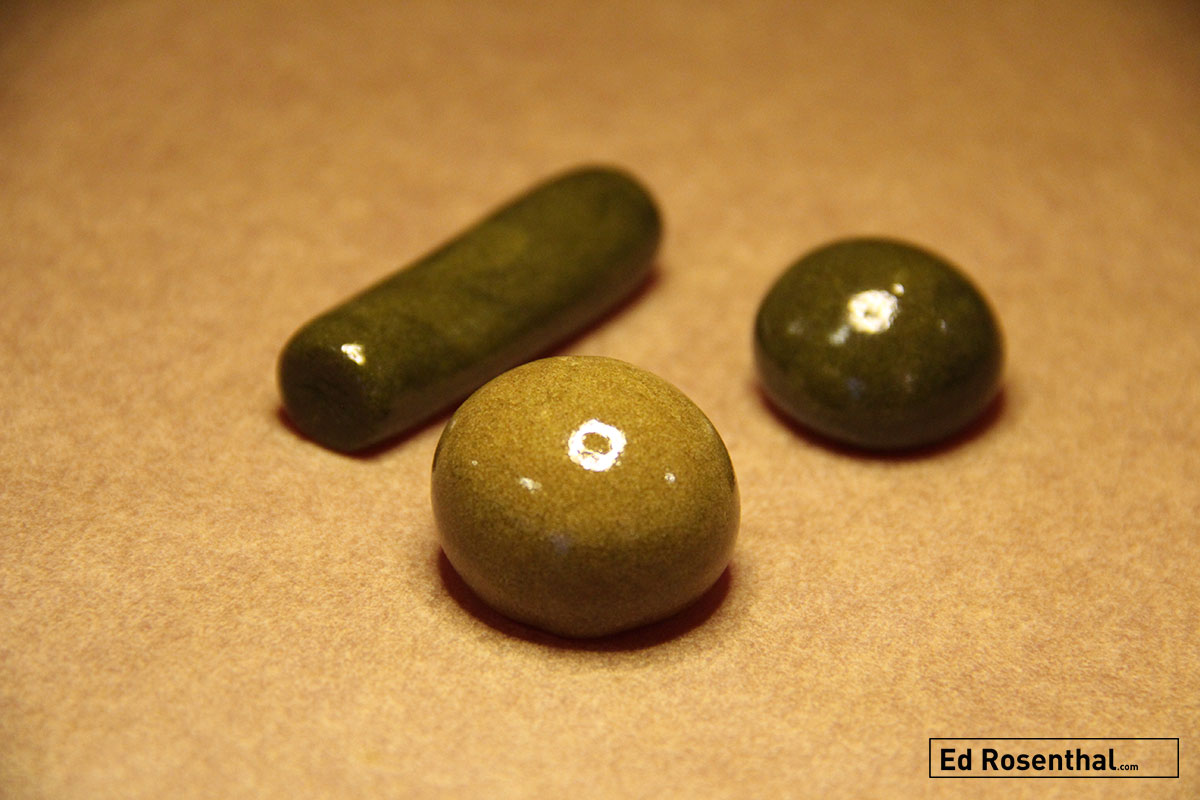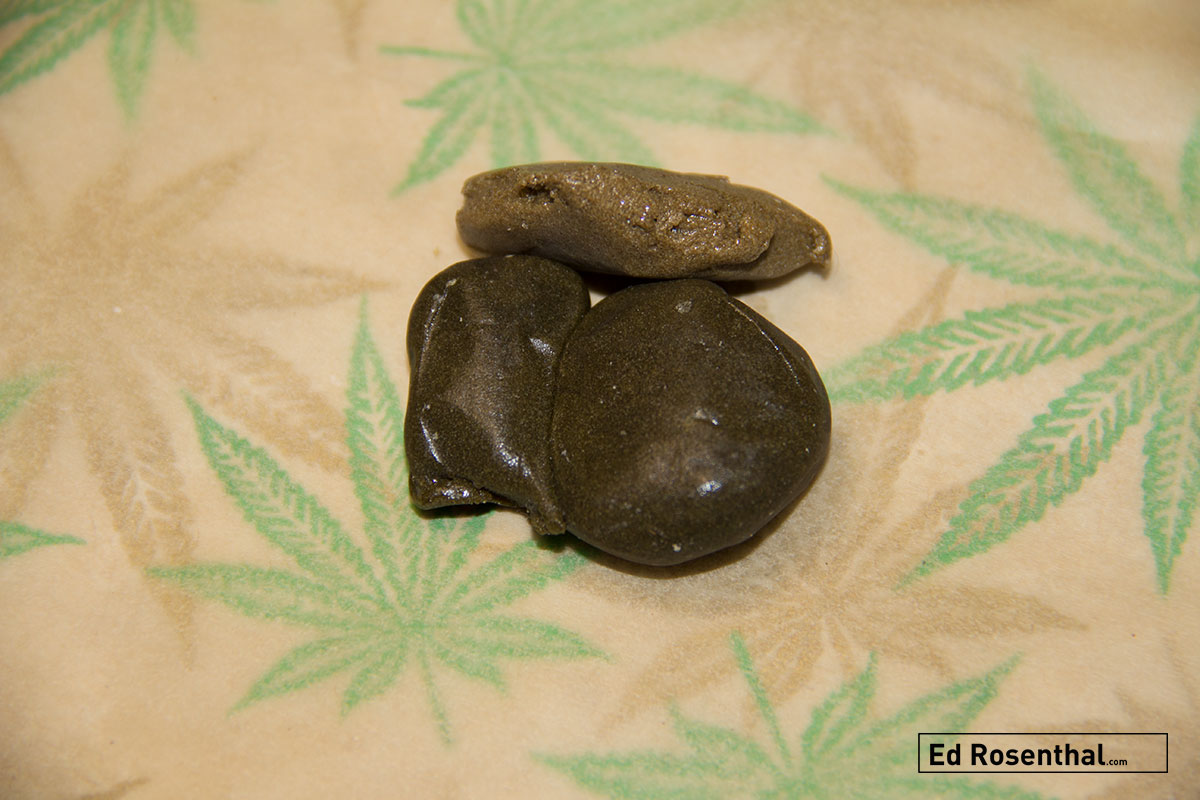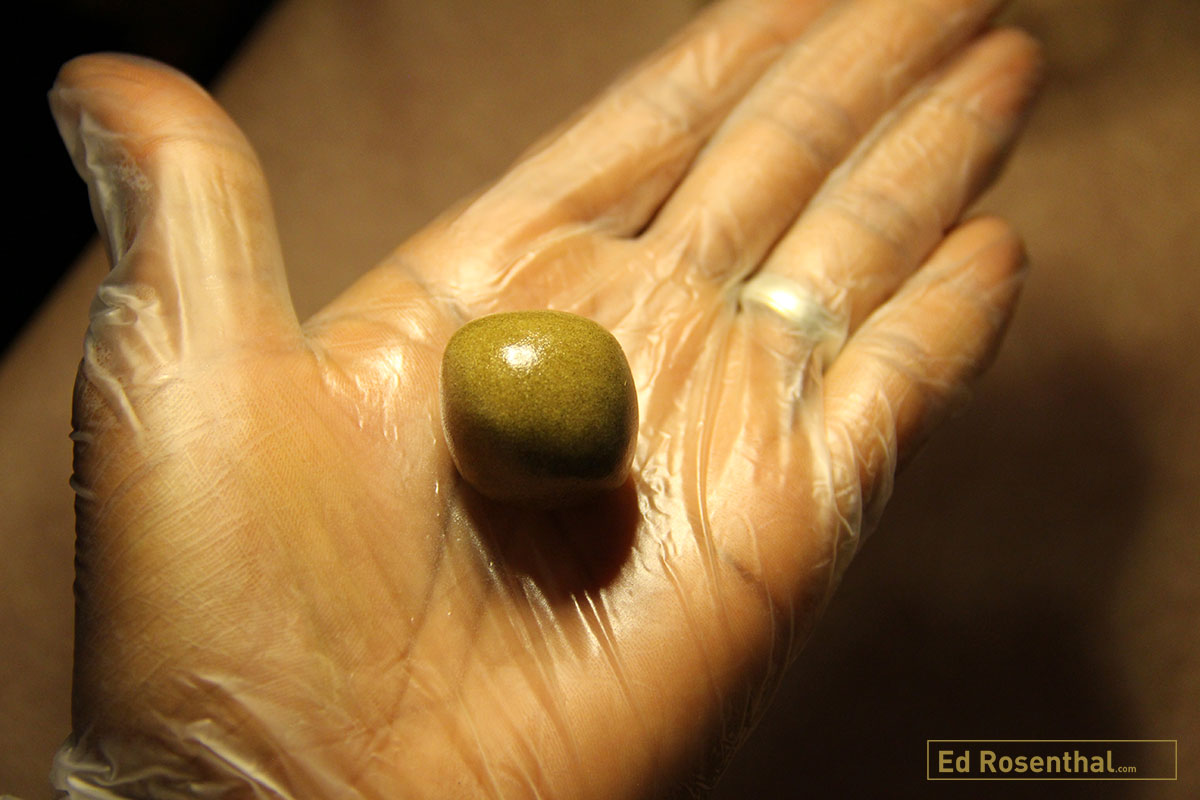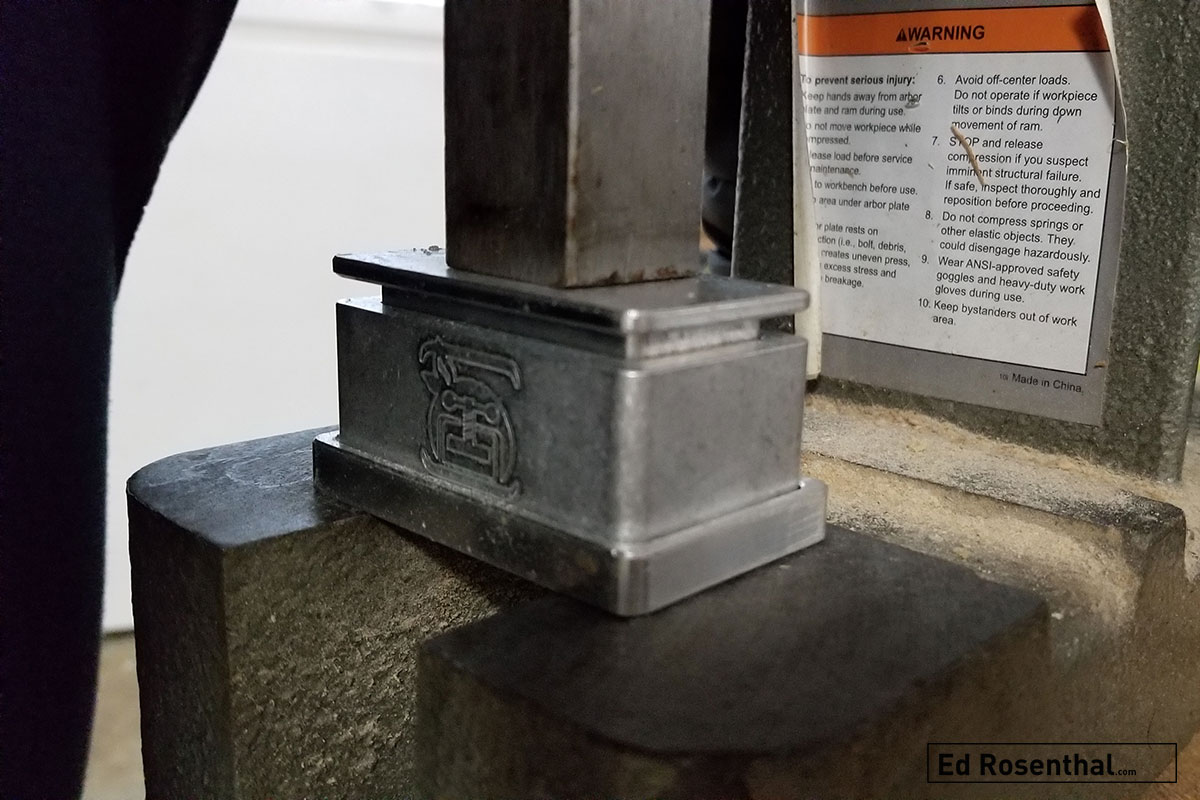Concentrated Cannabis: 4 Ways to Make Hash at Home
Pressed hash by The Dank Duchess
Why make hash?
Making hash is a wonderful method of preserving resin long after cannabis has been harvested. Whether in the kitchen or in the lab, hash making is a process that is available to everyone. Using old school methods or new school techniques, the process is relatively straightforward — agitate to remove trichomes, collect the resin, sort the resin by size, dry the resin, smoke and enjoy!
What are the ways you can make hash?
Water and ice
Water and ice can be used to mechanically separate trichomes from the plant, and filters can concentrate the glands into unpressed or “loose” hash.
Side note You might also be interested in watching: WATER HASH 101: Plus 6 methods for DIY Water Hash
Machinery
Further refinement using machinery and tighter control of temperature and humidity will yield the strongest nonsolvent concentrates.
Pressing
Pressing unrefined hash into balls, cakes, or slabs creates hashish; all steps of the process are consumable, but making hashish is a two-step process: First, the glands are collected; second, the collected material is compressed into bricks or balls.
Pressing hash involves a combination of force and mild heat to condense the glands into a solid mass. The shape and size of hash varies depending on the pressing method. When hand pressed, hash is often ball-shaped. Flat-pressed hash may look like thin shale rock, with hardened shelf-like layers that chip along the creases. Mechanically pressed hash is usually a neat cake, like a bar of soap.
Pressed hash by The Dank Duchess
What does hash look like and what is the high experienced?
Hashish ranges in color and pliability. The variety of marijuana used, manufacturing method, temperature, and the purity of the kief influence its color, which ranges from light yellow-tan to charcoal black, and its texture, which ranges from pliable taffy to hard and brittle.
Hashish oxidizes and darkens from exposure to light, oxygen, and heat. Regardless of its texture, high-quality hash should soften with the simple warmth of your hands.
Aficionados often describe the high that hash produces as more complex than that of kief. In the region of traditional hash making kief is typically aged, sometimes for a year or more, before it’s pressed. Most modern hash makers do not wait that long.
How to press kief or water hash
Before attempting to compress kief or water hash the material must be completely dry. To ensure that all moisture has been eliminated before pressing, dry the material one last time. Place the kief or water hash in a food dehydrator set on the lowest setting, or a horticultural heat mat (preset at 74˚F [23˚C]), microwave the material on low, or place it in an open dish in a frost-free freezer. The vacuum conditions promote water evaporation, preventing mold from infecting and spoiling the hash. However, when the drying temperature is above 75˚F (24˚C), some of the terpenes will evaporate, diminishing the kief’s unique odors and their effects.
Side note: You might also be interested in making dry ice kief. Here are 8 simple steps to making Dry Ice Kief
Pressing transforms the material both chemically and physically; the glands are warmed and most break, releasing the sticky oils that contain the psychoactive cannabinoids, as well as the terpenes—the source of cannabis’s smell, taste, and suite of effects.
Terpenes lend fragrance to the hash. Smells and flavors characteristic to hashish range from spicy or peppery to floral. Many terpenes are volatile at room temperature. When in-haled, they contribute to the lung expansiveness (cough factor), as well as the taste. Aged kief is both milder in smell and flavor, and less cough inducing, because some of the terpenes (but not the THC) have dissipated.
Releasing and warming cannabinoids exposes them to air. This has the beneficial effect of potentiating the THC through decarboxylation. Continued exposure to light, air, heat, and moisture leads to THC deterioration.
You can press hash manually or mechanically. Manual methods work well for smaller amounts. Mechanical methods use a press, which is fast, convenient, and efficient.
Here are 4 ways to make hashish at home
1. Shoe hash making method
Hash by Lizzy Fritz.
This pressing method lets you multitask. While you’re busy doing other things, the hash is being inconspicuously pressed within your shoe!
Shoe hash is a low-hassle way to press a small amount of kief or water hash. A few grams, usually 5 grams or less, are bagged in tightly wrapped cellophane or parchment paper wrapped around the material several times. A piece of tape stops it from unfolding. Punch a pinhole through the package to allow trapped air to escape. Don’t use a plastic bag because the hash sticks to it messily. It’s important for scientific as well as psychological reasons for the material to be securely sealed before it goes in your shoe.
Place the package inside the heel of your shoe. Hard-soled shoes or boots are better for pressing than soft-soled shoes, such as sports shoes, which take longer to process the kief.
The heel’s weight and pressure within the shoe, aided by body heat, presses the hash into a slab. The pressing takes 15 minutes to an hour of on-foot activity, but it benefits from additional wear.
2. Pressing or compressing kief by hand method
Traditional Nepalese pressed hash ballby The Dank Duchess
Pressing by hand is a method for transforming kief into hashish a few grams at a time. Pressing by hand is convenient since it requires no additional equipment but it takes considerable energy and the results are better with a practiced technique. Those unaccustomed to hand pressing may find it difficult to make the material bind together. The considerable work it takes to get well-pressed hash can easily result in sore hands.
This method works best using freshly sieved medium to high-quality kief. If the kief contains a significant amount of vegetative material, it’s harder to mold into hash and may not stick together properly. To hand press, measure out a small mound of fresh kief that will fit comfortably in the hand, usually a few grams at the most. Work this material with one hand against the other until it begins to cohere into a solid piece. Then rub it between the palms, or between palm and thumb. After 10 minutes or more of working the material, it begins to change density. Dry, aged kief lacks some of its original stickiness and may take longer to stick together, but if it was stored properly, it should cooperate, though it may require more kneading. When a piece of hashish has not been pressed properly, it crumbles easily at room temperature.
If the kief is particularly stubborn and won’t stick together to form a mass, mildly heat it. Wrap the material in food-grade cellophane, ensuring that it is completely sealed and all the air is squeezed out. Wrap this package in several layers of thoroughly wetted newspaper, cloth or paper towels. Turning frequently, warm in a skillet that is set on the lowest heat. It doesn’t need to be heated as long as other methods because the only point of heating is to get the material to stick together so it can be kneaded into a solid piece.
Another method is to wrap it the same way and press it for a few seconds on each side with an iron that is set on a very low heat setting.
3. Hot water bottle hash making method
Water hash made from trim, gently pressed. Photo: Lizzy Fritz.
The concept of using the hot water bottle method is similar to pressing by hand. However, more heat is applied to thoroughly melt the waxy cuticle of each trichome head. This method works with medium- to high-quality resin that is bone dry.
Place a pile of resin on the surface of either organic cellophane or parchment paper. Fold the paper in half. Bring water to a boil. Fill a wine bottle with the hot water. Allow the bottle to cool for 5 minutes. Place the hot wine bottle on the paper-covered resin and allow it to sit for 30 seconds.
Look through the bottle to the darkening stain of the warming resin. If the color is changing quickly, you have the sign that the resin will press very quickly. If the resin barely begins to change after 30 seconds, you will have to work the resin considerably more. Using a series of passes, roll the wine bottle over the resin using minimal pressure. Allow the heat to melt the material without forcing, using the pressure of your hand. Flip the paper over and do the same process in the other side.
By now, the resin should no longer be a mound, but flatter and more of a patty: If not completely so. With a swift flip of the wrist, open the paper. The resin should be sticky and have a nice sheen. Fold the resin in half and then again and begin to press once more. Repeat this process one more time before taking the warm resin into the palm of your hand.
To create a modern-day “temple ball,” roll the ball like a mass of clay. Roll it with firm pressure; compressing the resin together and pushing out any excess air. Resin that has lumps, lines and wrinkles need to be more thoroughly worked. Continue rolling the resin until you’re satisfied with the mass in your hand.
With very high-quality resin, the result will be a completely melted, shiny mass of resin ready for storage.
4. Machine-press hash making method
A machine press by The Dank Duchess
Making hash is a cinch with a mechanical press. Bookbinding presses, called nipping presses, can be used. Plans are available on the web for building a press using a hydraulic jack.
Hand-pumped hydraulic presses are a less expensive way to get a tight press. Another cost-effective method uses a vice grip, although it takes some adaptation.
For small amounts, a pollen press can be used in conjunction with a handheld kief collecting grinder. Kief is added to this small metal tube. The tension pin is placed in, and the pollen press is screwed shut. The next day, the kief has been pressed into a neat hash block. Many companies have similar presses now, including one made of stainless steel with a low-torque T-handle.
How to store hash
Once the hashish is pressed, it can be kept for months or possibly years with little deterioration to its potency and flavor, with proper storage. A frost-free freezer is the best place for storing hash.
Metal, glass, or silicone containers are preferred for storage. Plastics and rubber are not recommended because the terpenes—responsible for the flavor and aroma of the hash—are somewhat volatile compounds that interact chemically with plastic or rubber, degrading both the hash and the container. However, this happens slowly under freezing conditions.
Over time, the outer layer of hashish oxidizes and loses potency. The inside, not exposed to higher levels of light and oxygen, remains potent. Remember that mild light, heat, moisture, and oxygen oxidizes the outside of the hash, destroying its potency.
Join our cannabis community
Follow Us












